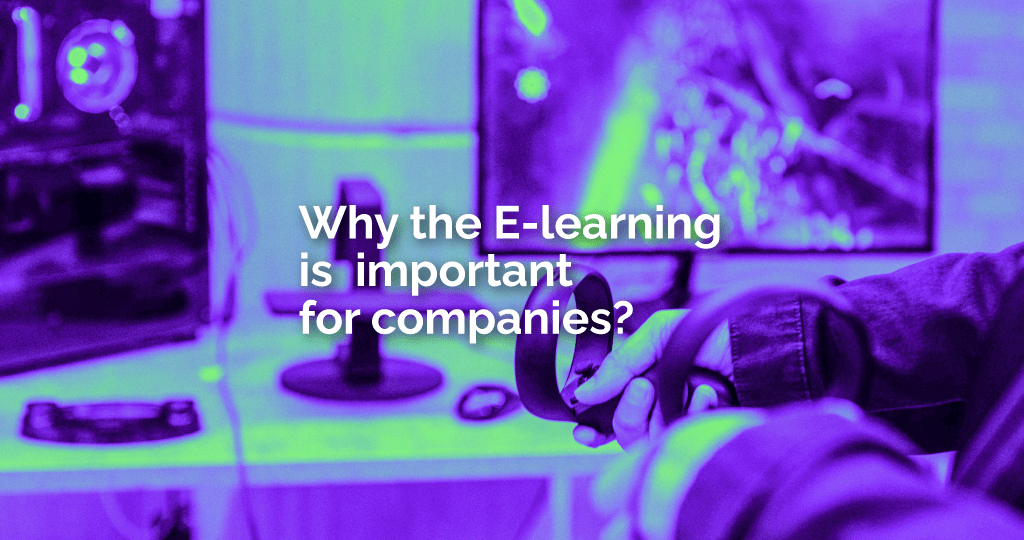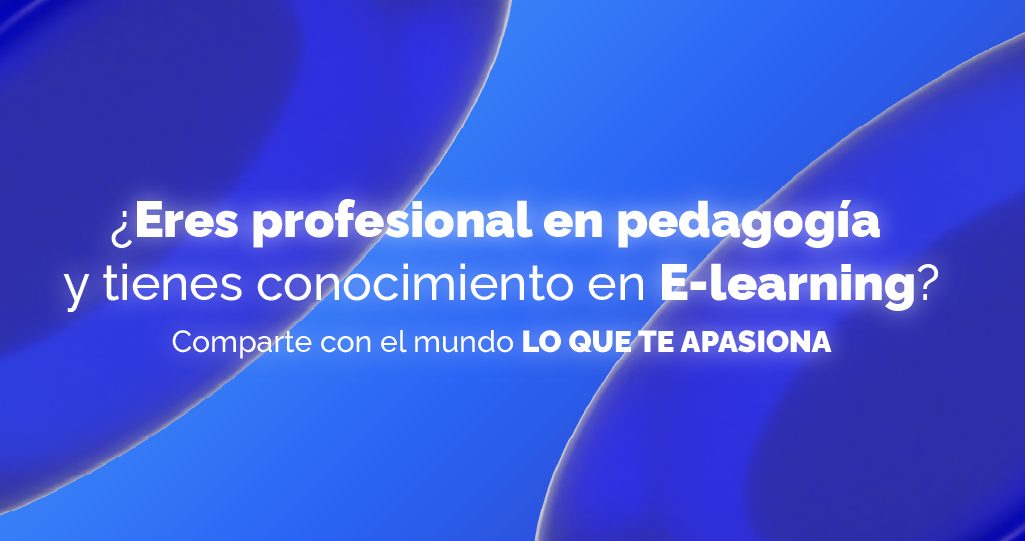
¿Por qué es importante el e-learning para las empresas?
Why is important the E-learning for companies?
El e-learning facilita el “acceso a la formación y actualización del personal de las empresas, haciéndolas más competitivas y eficientes” (Martínez, 2009, p.34). Esta modalidad ha ganado cada vez más relevancia gracias a la flexibilidad que ofrece a los empleados para su formación, así como a la accesibilidad a través de dispositivos digitales. El uso de este modelo educativo en entornos corporativos ha experimentado un crecimiento significativo en las últimas décadas.
En 1995, solo el 4 % de las empresas utilizaban esta tecnología para la capacitación y el desarrollo de sus colaboradores. Sin embargo, para el año 2020, el 90 % de las empresas a nivel mundial ya implementaban el e-learning (Sisti, 2023). Esta modalidad permite llegar a empleados ubicados en diferentes regiones geográficas, lo que contribuye a la reducción de los costos de transporte para las compañías.
Por otro lado, esta forma de capacitación reduce los costos entre un 40 % y un 60 % en comparación con la formación tradicional, al tiempo que descentraliza la estructura empresarial (Martínez, 2009). Además, genera una cultura digital que transforma la comunicación y las relaciones internas y externas, favoreciendo cambios organizacionales y metodológicos (Martínez, 2009).
Según Mittelstaedt et al. (2009, citados por Álvarez, 2011, p.6), “la formación virtual de los trabajadores ha mejorado el aprendizaje organizacional, ya que ha incrementado la productividad de los empleados al desarrollar nuevas y mejores habilidades y competencias dentro del entorno laboral en el que se desempeñan”. En este sentido, las empresas inteligentes que desarrollan soluciones de e-learning obtienen una ventaja competitiva, al fomentar el aprendizaje, la productividad y la eficiencia de las personas que hacen parte de su organización.
Con el auge de las tecnologías, las empresas se encuentran en constante transformación e innovación de sus procesos productivos y organizacionales. Por ello, según Martínez (2000, citado por Rodríguez et al., 2018), aquellas organizaciones limitadas en su crecimiento económico, social y tecnológico, generalmente no logran producir nuevo conocimiento que les permita adaptarse a las demandas sociales y a los requerimientos del mercado (Martínez, 2000, p.144). En consecuencia, las empresas tradicionales deben avanzar hacia su transición a empresas inteligentes a través del e-learning, con el fin de mejorar sus procesos organizacionales, incrementar su capital, fortalecer su talento humano y automatizar procesos de producción.
De acuerdo con Senge (1999, citado por Rodríguez et al., 2018), “las organizaciones inteligentes son aquellas capaces de crear conocimiento y transformar la realidad mediante el aprendizaje” (Rodríguez et al., 2018, p.143). Cabe resaltar que el concepto de aprendizaje no se limita únicamente a adquirir más conocimiento, sino a desarrollar la capacidad de alcanzar objetivos y adoptar nuevas formas de pensar (Lanzas et al., 2005).
Las pequeñas y medianas empresas (pymes) enfrentan desafíos relacionados con su permanencia en el mercado, por lo que constantemente buscan ser más competitivas. En este sentido, el e-learning puede beneficiarlas al permitirles adquirir conocimientos en áreas como gestión, liderazgo, administración y servicio al cliente, así como en campos específicos de su sector, como el comercio, lo cual a su vez fomenta la creación de nuevo conocimiento. De esta manera, las pymes pueden acceder a los mismos recursos intelectuales que las grandes empresas y, por ende, mejorar su capacidad competitiva.
Por otro lado, las grandes empresas también se ven beneficiadas con la implementación de soluciones de e-learning. Algunas de las ventajas que adquieren incluyen: empleados nuevos capacitados para desempeñar sus funciones de manera eficiente, flexibilidad para revisar los cursos en cualquier momento, aumento de la productividad, entre otras (Van, 2003).
En conclusión, el e-learning se ha convertido en una modalidad de aprendizaje indispensable para mejorar la productividad, la eficiencia y el desarrollo del talento humano en las organizaciones. Las empresas deben implementar actividades de gestión del conocimiento y fomentar el uso del e-learning entre sus trabajadores, ya que constituye una herramienta clave para el crecimiento y la transición hacia organizaciones más competitivas en un mercado en constante transformación e innovación. Las empresas necesitan avanzar hacia el modelo de empresas inteligentes, capaces de crear conocimiento e innovar a través del aprendizaje.
En el Centro de Investigación C-Transmedia desarrollamos soluciones de e-learning y ofrecemos formación en competencias digitales. Si estás interesado en nuestros servicios, contáctanos a través de nuestro sitio web o por nuestros canales: Facebook, Instagram, Twitter o correo electrónico.
Área de Innovación y Transferencia de Conocimiento
Carolina Torres, Cristian Ramírez y Julián Orlás
Centro de Investigación C-Transmedia
Referencias
Álvarez, Y. (2011). Capacitación virtual: El uso de E-learning para la formación de los trabajadores en las organizaciones. Recuperado de: https://core.ac.uk/download/pdf/47066909.pdf
Baelo, R. (2009). El E-learning, una respuesta educativa a las demandas de las sociedades del siglo XXI. Recuperado de: http://www.redalyc.org/articulo.oa?id=36812381007
Lanzas, A. et al. (2005). Creación de empresas inteligentes, cinco disciplinas que contribuyen al proceso. Recuperado de: https://www.redalyc.org/pdf/849/84911707027.pdf
Martínez, C. (2009). La gestión del conocimiento a través del e-learning. Un enfoque basado en escenarios. Recuperado de: https://reader.elsevier.com/reader/sd/pii/S1135252312600768?token=80924EB64F16DC2167616E03296C90EFCDACE4CCBE8108C6BD8334C8B0567368FEBDF309F1847945F157F25410538AD6&originRegion=us-east-1&originCreation=20230510145428
Ministerio de Educación de Colombia. (2016). Educación virtual o educación en línea. Recuperado de: https://www.mineducacion.gov.co/1759/w3-printer-196492.html#:~:text=La%20educaci%C3%B3n%20virtual%2C%20tambi%C3%A9n%20llamada,ense%C3%B1anza%20y%20aprendizaje%20el%20ciberespacio.
Rodríguez, H. et al. (2018). Clima y cultura organizacional y su relación con el cambio gerencial de organizaciones tradicionales a organizaciones inteligentes. Recuperado de: https://revistas.uteq.edu.ec/index.php/csye/article/view/270/266
Schneckenberg, D. (2004). El e-learning transforma la educación superior. Recuperado de: https://educar.uab.cat/article/view/v33-schneckenberg/243
Sisti, B. (2023). ¿Dónde se quedó mi máquina de café? Informe de la Asociación de Aprendizaje y Desarrollo de la Sociedad para la Gestión de Recursos Humanos (SHRM). Recuperado de: https://www.rrhhdigital.com/editorial/157957/
Van, N. (2003). The E-Learning Fieldbook: Implementation Lessons and Case Studies from Companies that are Making E-Learning Work Recuperado de: https://www.bqm.com.pe/libros/Lecciones%20fundamentales%20sobre%20el%20E-Learning%20(2%C2%AA%20Parte%20An%C3%A1lisis%20de%20Casos).pdf


